Chevrolet Sonic Repair Manual: Adhesive Installation of Windshields
- Use a urethane adhesive systems which meet GM Specification GM?‚ā¨‚Äį3651G.
- Remove all mounds or loose pieces of urethane adhesive from the pinchweld area.
- If the original window is being reused, remove all but approximately 2?‚ā¨‚Äįmm?‚ā¨‚Äį(3/64?‚ā¨‚Äįin) of the existing bead of urethane adhesive from the pinchweld flange by using a clean utility knife or razor blade scraper.
- Inspect for any of the following problems in order to help prevent future breakage of the window:
Warning:
Refer to Glass and Sheet Metal Handling Warning.
- The flange of the window opening
- High weld
- Solder spots
- Hardened sealer
- Any other obstruction or irregularity in the pinchweld flange
Note:
If corrosion of the pinch-weld flange is present or if sheet metal repairs or replacements are required, the pinch-weld flange must be refinished in order to restore the bonding area strength. If paint repairs are required, mask the flange bonding area prior to applying the color coat in order to provide a clean primer only surface. Materials such as BASF?‚ā¨‚ÄįDE15?¬ģ, DuPont ?‚ā¨‚Äį2610?¬ģ, Sherwin-Williams PSE?‚ā¨‚Äį4600 and NP70?¬ģ and Martin-Semour 5120 and 5130?¬ģ PPG?‚ā¨‚ÄįDP90LF SPIES/ HECKER?‚ā¨‚Äį3688/8590 ?‚ā¨‚Äú 3688/5150 ?‚ā¨‚Äú 4070/5090 STANDOX?‚ā¨‚Äį11158/13320 ?‚ā¨‚Äú 14653/14980 products are approved for this application.
- Remove all traces of broken glass from the outer cowl panel, seats, floor and defroster ducts.
- Clean around the edge of the inside surface of the window with a 50/50 mixture of isopropyl alcohol and water by volume on a dampened lint free cloth.
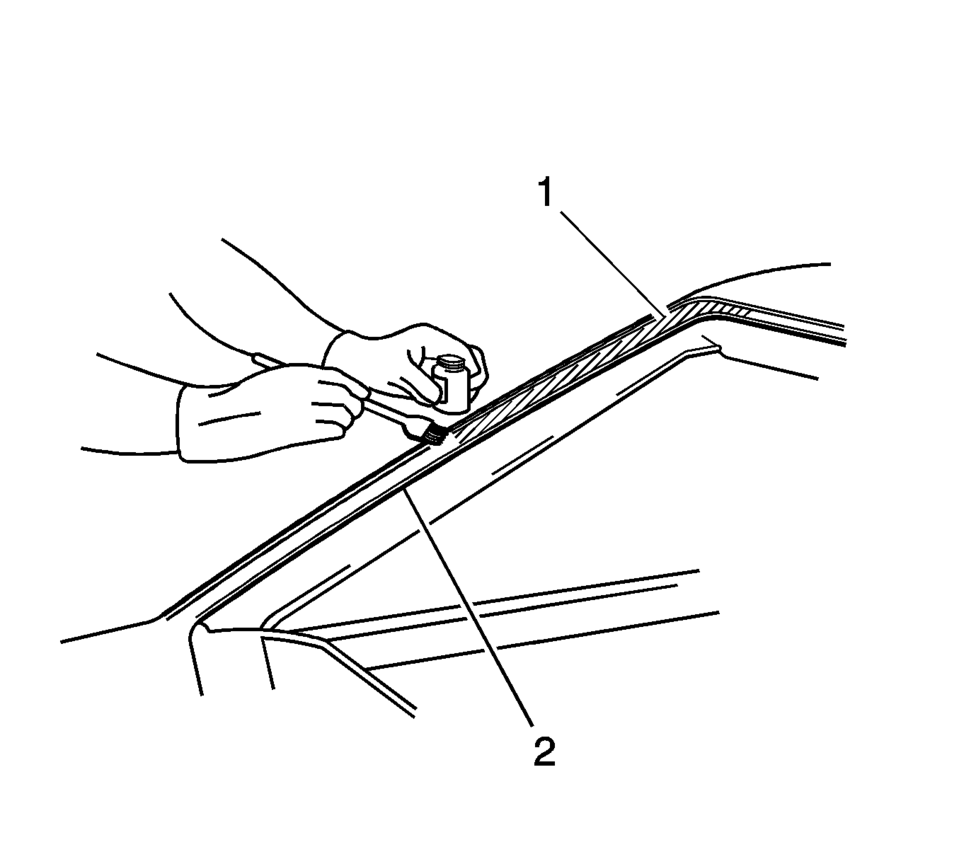
Warning:
Failure to prep the area prior to the application of primer may cause insufficient bonding of urethane adhesive. Insufficient bonding of urethane adhesive may allow unrestrained occupants to be ejected from the vehicle resulting in personal injury.
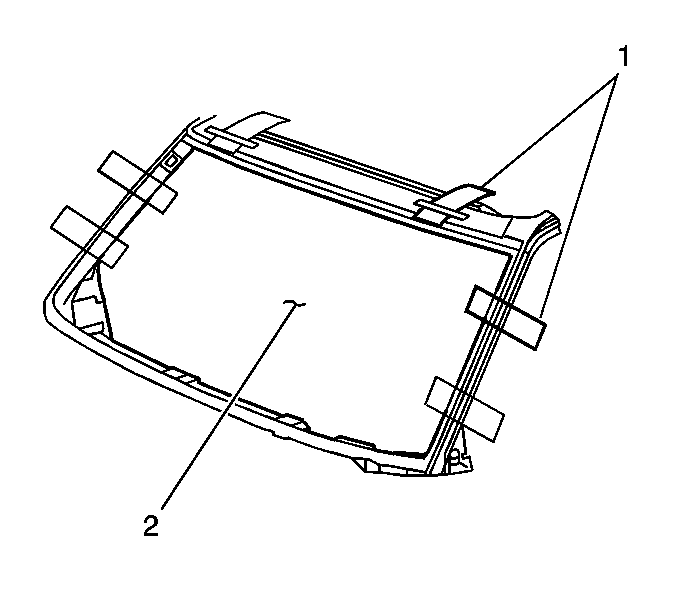
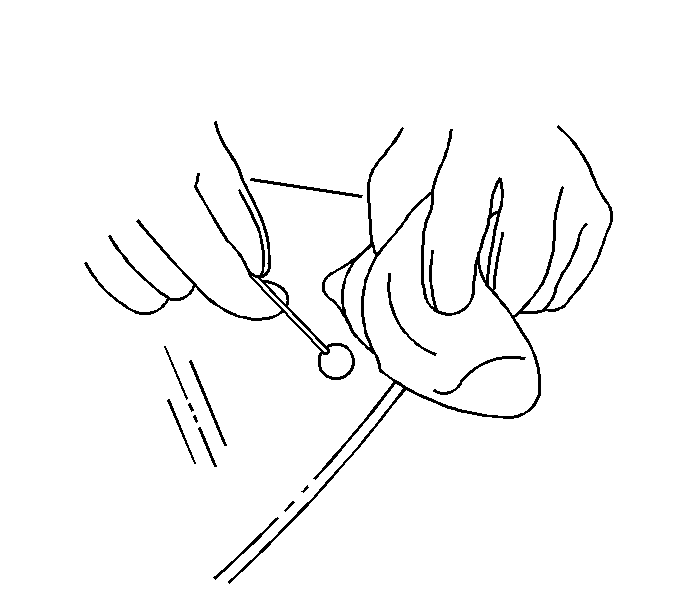
Immediately wipe the glass primed area using a clean, lint-free cloth.
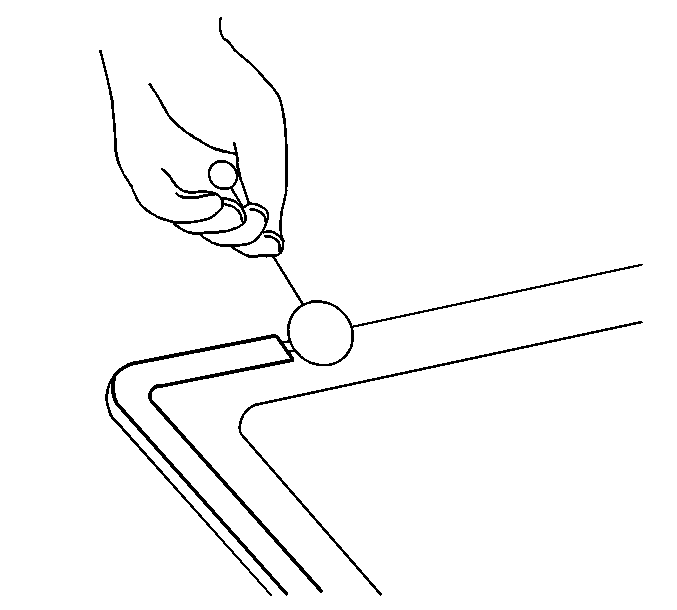
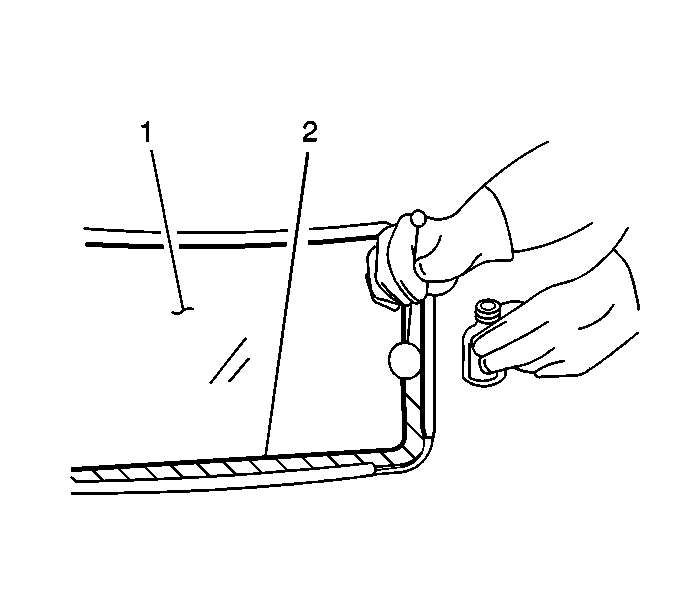
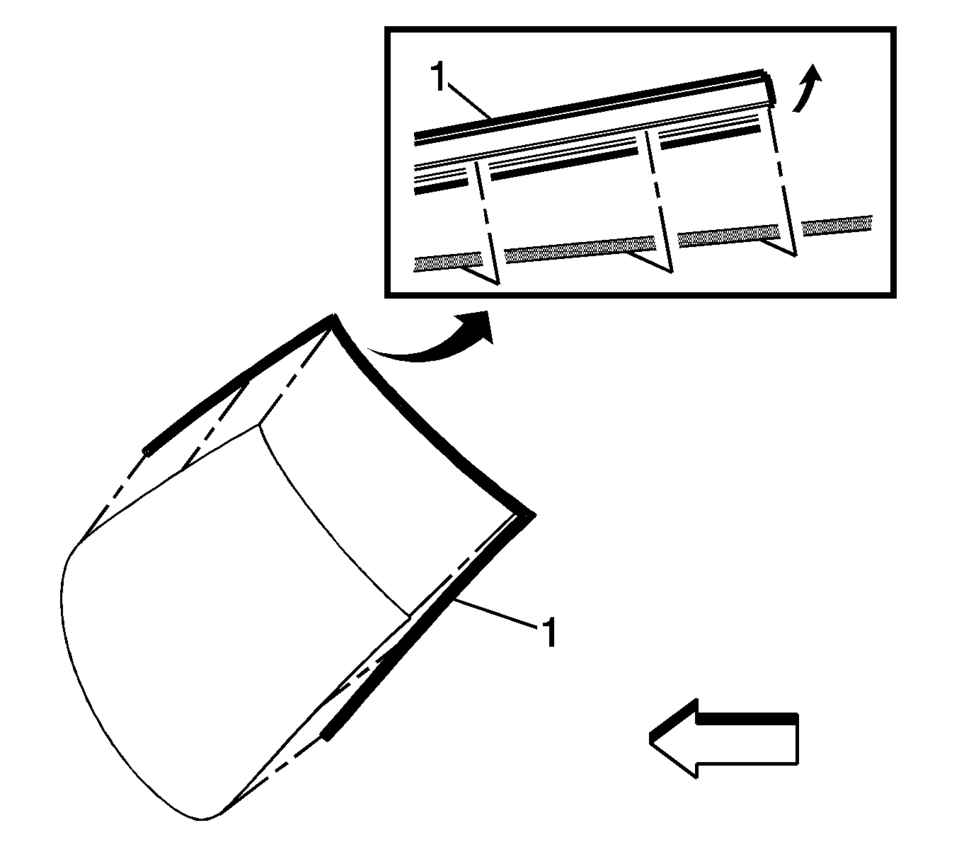
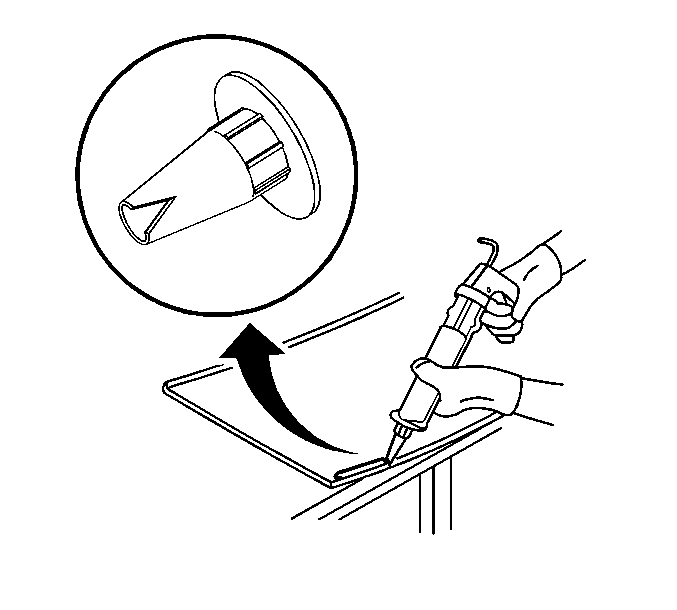
Cut the applicator nozzle to provided a V cut to apply the auto-adhesive.
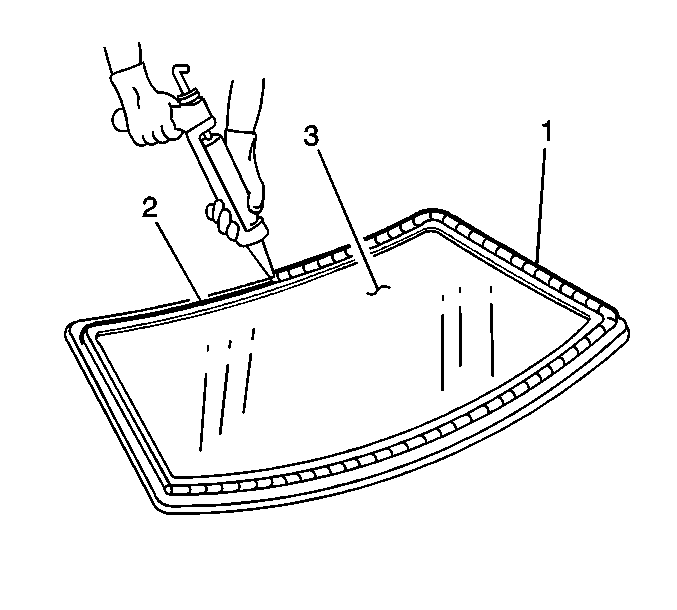
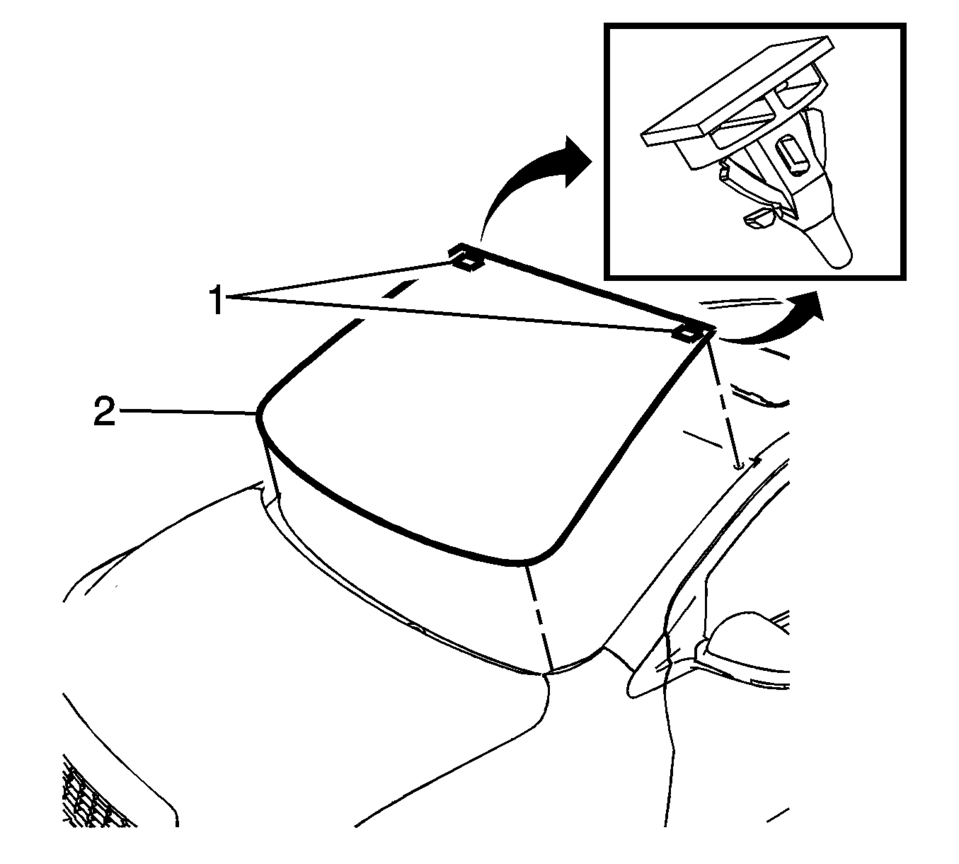
Note:
If the locating pins were cut off it will be necessary to tape the window in place until the auto-adhesive cures per auto-adhesive instructions by the manufacturer?‚ā¨‚ĄĘs.
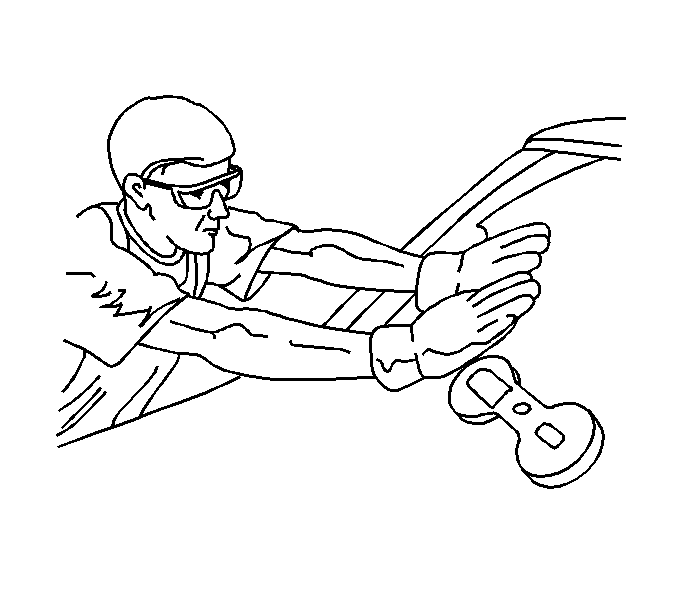
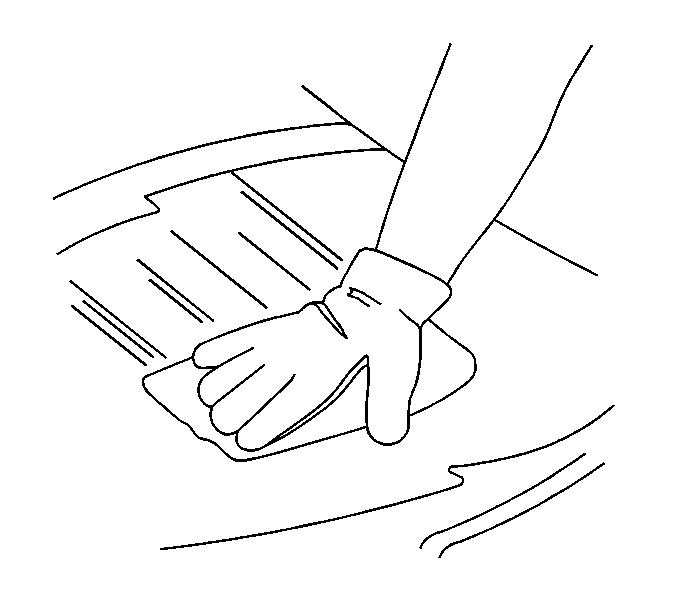
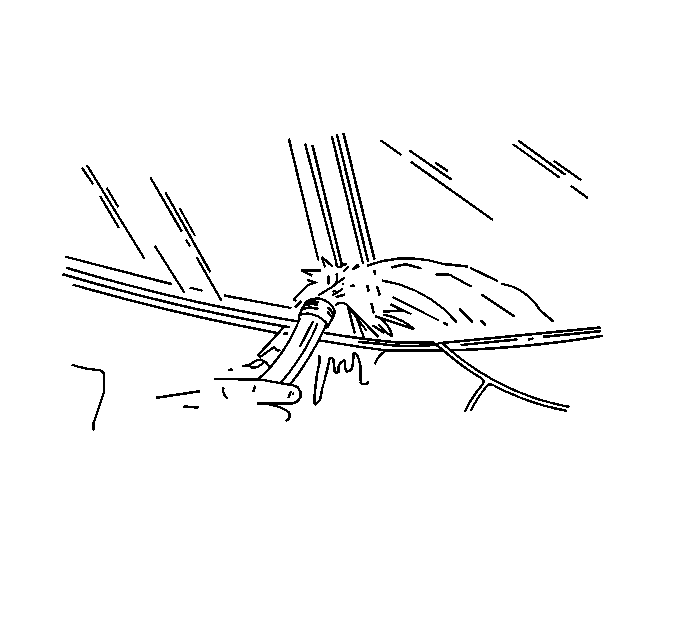
Note:
Do not direct a hard stream of high pressure water to the freshly applied urethane adhesive.
Warning:
Insufficient curing of urethane adhesive may allow unrestrained occupants to be ejected from the vehicle resulting in personal injury.
- For the moisture-curing type of urethane adhesive, allow a minimum of 6?‚ā¨‚Äįhours at 21?¬įC (70?¬įF) or greater and with at least 30 percent relative humidity. Allow at least 24?‚ā¨‚Äįhours for the complete curing of the urethane adhesive.
- For the chemical-curing type of urethane adhesive, allow a minimum of 1?‚ā¨‚Äįhour .
Do NOT physically disturb the repair area until after these minimum times have elapsed.
- Partially lower a door window in order to prevent pressure buildups when closing doors before the urethane adhesive cures.
- Do not drive the vehicle until the urethane adhesive is cured. Refer to the above curing times.
- Do not use compressed air in order to dry the urethane adhesive.
 Adhesive Installation of Rear Windows
Adhesive Installation of Rear Windows
Warning: Refer to Glass and Sheet Metal Handling Warning.
Use a urethane adhesive systems which meet GM Specification GM?‚ā¨‚Äį3651G.
Remove all mounds or loose pieces of urethane ad ...
 Front Side Door Window Outer Sealing Strip Replacement
Front Side Door Window Outer Sealing Strip Replacement
Front Side Door Window Outer Sealing Strip Replacement
Callout
Component Name
1
Front Side Door Window Outer Sealing Str ...
Other materials:
Radio/Audio System Description and Operation
The entertainment system on this vehicle may have several different configurations
available to it. To determine the specific configuration of the vehicle, please
see the Service Parts ID Label, and refer to RPO Code List.
Each item in the list below represents topics covered in detail below. ...
Bluetooth (Overview)
For vehicles equipped with Bluetooth capability, the system can interact with
many cell phones, allowing:
Placement and receipt of calls in a hands-free mode.
Sharing of the cell phone’s address book or contact list with the vehicle.
To minimize driver distraction, before driving, and ...
Cleanliness and Care
An automobile engine is a combination of many machined, honed, polished, and
lapped surfaces with tolerances that are measured in ten thousandths of an inch.
When any internal engine parts are serviced, care and cleanliness are important.
A liberal coating of engine oil should be applied to fr ...
0.0061
